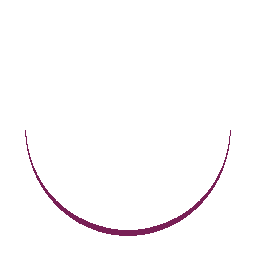Care And Treatment
Routine cleaning and proper storage will keep your pearls looking beautiful.
Caring For Your Pearls
A simple rule of thumb will keep your pearls like new: Put them on last, and take them off first. Pearls are porous and will absorb makeup, hairspray, sunblock, perfume and other beauty products. The chemicals in these products will damage your pearls, so put them on after your morning routine, and leave them at home when you head to the salon. Never bathe or swim in your pearls—water can weaken the silk or nylon cord. Remove your pearls before exercising or spending time in the sauna. The surface of a pearl is soft and easily scratched. Avoid wearing bristly fabrics, like Shetland wool, or clothing with sequins, beading and metallic thread.
Cleaning Your Pearls
- Use a gentle, natural soap.
- Use distilled water.
- Apply soapy water using a soft cloth.
After each wear, gently wipe your pearls with a soft cloth, like a microfiber cleaning cloth or chamois, before storing. Perspiration and the skin's natural oils can damage a pearl's luster.
Wipe your pearls immediately if they are exposed to common acids like fruit juice and vinegar. Acids break down the crystalized calcium of the pearl.
When routine care is not enough, your pearls may require a more thorough cleaning. Apply a natural, non-detergent soap and water using a microfiber cleaning cloth. (Unscented, liquid castile soap works like a charm.) Do not submerse or soak your pearls in the soap-water solution; instead, use the cloth to transfer the soapy water to the pearls. Use distilled bottled water, not tap water. The chlorine and other chemicals present in tap water can damage your pearls. Do not use a toothbrush or any other type of bristle to clean your pearls—you risk of scratching them. Lay flat to dry. Allow pearls to air dry completely before wearing or storing.
- Don't use an ultrasonic cleaner; the vibrations can damage the nacre.
- Don't use a steam cleaner; the heat can damage your pearls.
- Don't pull on the stringing material; handle with care while cleaning.
Storing Your Pearls
The surface of a pearl is soft and easily scratched. Store each piece of pearl jewelry in its own soft container to prevent contact with metal or other gemstones. Silk pouches, chamois bags and pearl folders are ideal-they prevent scratching and permit air flow. Do not store pearls in resealable plastic bags. Plastic bags release a chemical that can cause deterioration. Do not store pearls in a see-through jewelry box. Long-term exposure to sunlight can cause pearls to yellow.
Store pearls lying flat. Hanging pearls in storage puts unnecessary tension on the silk or nylon cord, accelerating the wear and making it prone to breakage. Always fasten the clasp and pin before storing to prevent tangles and scratches.
Do not store your pearls in a safe. Safes are humidity-controlled to protect paper. Pearls need to draw moisture from the air to maintain their beauty. When pearls are deprived of moisture, tiny fractures form causing fragility and discoloration. If your pearls must be stored in a safe, put a glass of water in the safe with them. If you live in a dry climate, you may want to consider storing your pearls in the bathroom, as it is typically the most humid room in the house. However, be sure to store them away from cleaners and cosmetics.
Heat will deprive pearls of their moisture and can lead to discoloration. Do not leave pearls around a direct source of heat, like a fireplace or on a laptop.
Restringing Your Pearls
Even with the utmost care, pearl strands weaken over time. Restringing your pearls reduces the risk your strand will break. Both silk and nylon cord will absorb the skin's natural oil and darken over time. The newness of a fresh cord is another benefit of restringing. How often your pearls should be restrung depends on the frequency of wear. Inspect your pieces regularly. Check the clasps and look for looseness or fraying. If you notice the stringing material is discolored, frayed or stretched, take it to your nearest jewelry store for re-stringing. You can also get your pearls inspected, free-of-charge at any of our stores.
When you decide to have your pearls restrung, you may want to ask your jeweler to knot the strand after each bead for added protection. That way, if the strand breaks, you only lose a single pearl. This also keeps the pearls from rubbing against each other. If you don't like how that looks, consider having the jewelry knot the first three or four beads on both sides of the clasp—that's where strands break most often.



